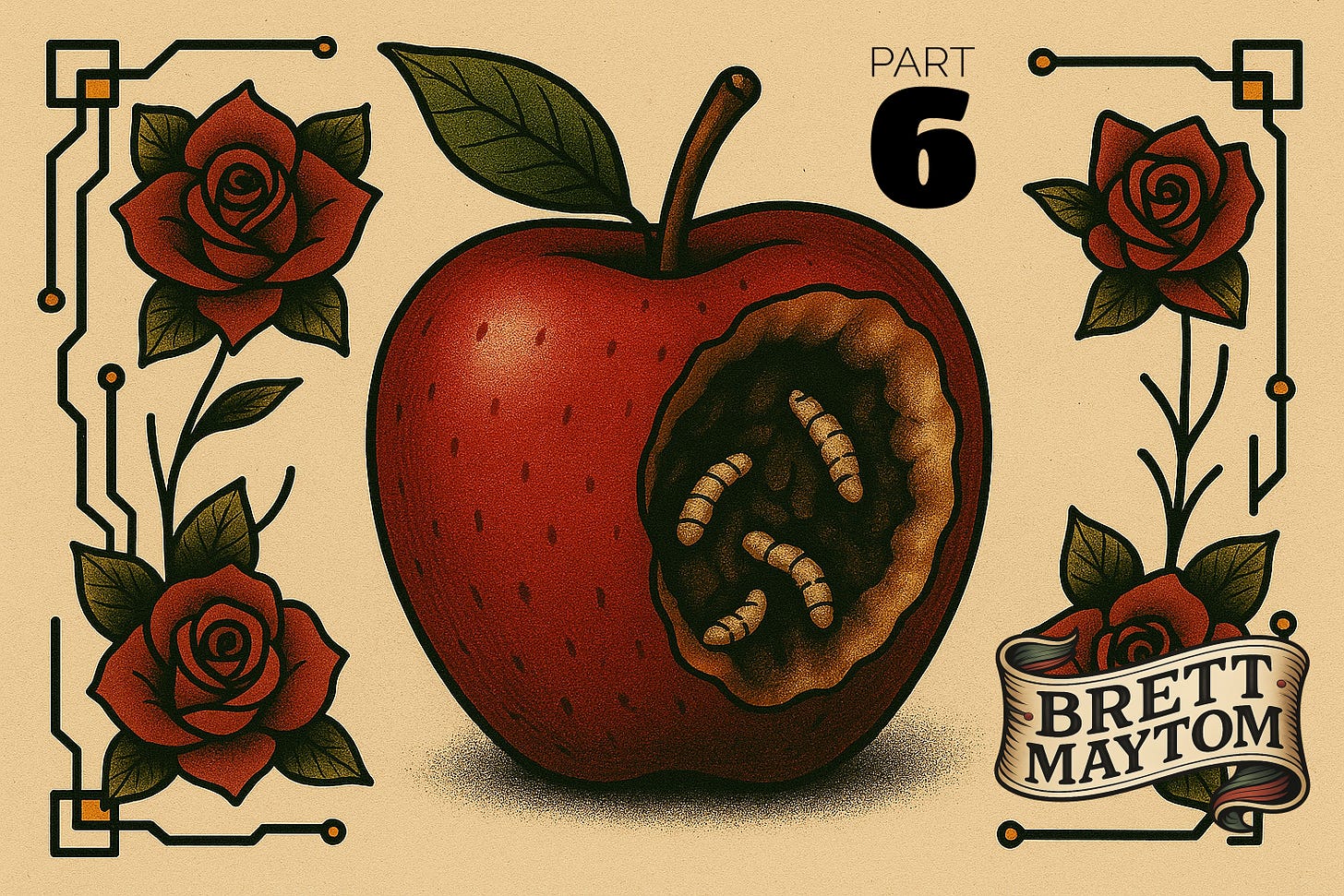Rotten Agile: Part 6 – The Illusion of Agility
Fed concepts without substance, left to invent what agility even means
They said, “Just adopt Agile or Scrum.” So we did. And everything got worse.
A team makes the switch. Standups begin, Jira boards go up, job titles change. But nothing really changes, and there’s still no agility. Morale remains low. Leadership is still confused. The business is still angry. Agile was supposed to fix this. But it didn’t. And the truth is, it never could, not the way we did it.
People copied the practices, turned them into rituals, and completely missed the meaning.
The agile marketplace offered vague ideas and abstract concepts but little practical help. No strong foundations. No shared starting point. Just high-level principles and hollow slogans like “every team is different” or “you’ll figure it out.” But most teams never did. What they needed wasn’t more freedom. They needed clarity, structure, and guidance.
Take the Scrum Guide, for example. It’s extremely powerful if you’ve been in the industry a long time and understand the science behind it. But for a new company just starting out with Scrum, it’s useless. Too vague. No practices. No real guidance. Just concepts, and even those are ambiguous. That’s where many of the dysfunctions began.
Instead, our consumers and many practitioners were thrown into a world of confusion and frustration.
We treated Agile like a buffet. Everyone picked what suited them. Coaches made things up as they went, often echoing others who did the same. Companies sold frameworks and transformations. Leaders chose what felt comfortable, thinking that meant they were being agile. There were no standards, no accountability, just opinions dressed up as expertise.
The market rewarded mimicry over mastery. Selling was valued more than substance. And we all fell for it.
Let’s be honest. This mess isn’t just the fault of a few bad actors. It’s systemic. We all played a part. Executives who wanted agility without change. Managers who said “servant leader” but still micromanaged. Teams that accepted dysfunction. Coaches who stayed quiet to protect their contracts. Trainers loyal to their brand. Practitioners improvising and doing what felt right.
The whole thing became a performance. Something we pretended was real. But it wasn’t.
So let’s stop pretending.
Agile isn’t failing because people are incompetent. It’s failing because the market is broken. It has been designed to look agile without actually being agile. And it has been like that for years.
We didn’t build real capability. We sold the illusion of it. This is a young marketplace, still in its infancy and stuck in the wild-west phase with no history to ground it.
And when it failed, we blamed the leaders, the teams, the frameworks. We sent them on another course. Pushed a different framework. Handed out another badge. But the real problem was never inside the team. It was around them.
This isn’t something we can fix with small tweaks. It needs a complete reset. That’s why I built Practiqual.
Because people aren’t the problem. The systems they’re placed into are.
And unless we’re willing to stop faking change, we’ll keep failing for all the same reasons.
Let it fall apart. Then let’s rebuild with integrity this time. Let’s uphold standards of excellence in a professional way. Let’s create safeguards to stop the mess from happening again. And let’s protect ourselves from the sharks, the money grabbers, and those who would drag our market and profession into disrepute.
Series posts
Read other posts in this series

